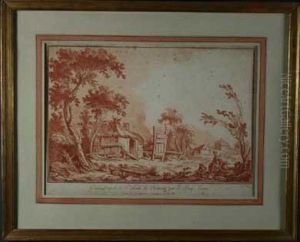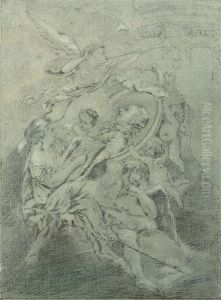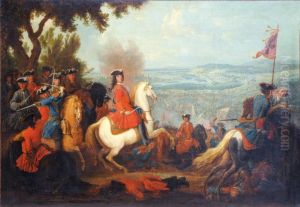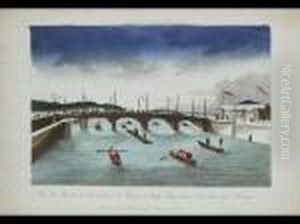Jacques Dit Le Jeune Chereau Paintings
Jacques Chéreau, known as Jacques le Jeune (the younger) to distinguish him from his uncle of the same name, was a notable French engraver and print dealer born in 1688. He came from a family deeply involved in the arts, particularly printmaking. His uncle, also named Jacques Chéreau, was an engraver as well, and it's important not to confuse the two.
Jacques le Jeune was active during a period that saw the production and distribution of prints become a substantial aspect of the art world in Europe, particularly in France. He worked primarily in Paris, which at the time was a thriving hub for artists and craftsmen. Chéreau's oeuvre mainly consisted of portraits and reproductions of popular paintings, a common practice among engravers of the era as it allowed the dissemination of artworks to a broader audience who could not afford or access the original pieces.
He inherited the family business from his uncle in 1713, which included a print shop located on the Île de la Cité in Paris. This shop, 'Aux Deux Piliers d'Or,' became a focal point for his activities in the art market. Chéreau not only produced engravings but also dealt in selling prints, which made him a well-known figure among collectors and art enthusiasts of his time.
Throughout his career, Chéreau contributed to the popularization of engraving as an art form. His works reflect the Baroque and early Rococo styles that were prevalent during the early 18th century. Although not as widely remembered as some of his contemporaries, Jacques le Jeune Chéreau remains a significant figure in the history of French engraving for his contributions to the craft and the art market.
Chéreau passed away in 1776, leaving behind a legacy as a member of a family that was deeply embedded in the artistic fabric of 18th-century France. His works, though less frequently encountered today, provide insight into the visual culture of his time and the role of printmaking in the dissemination of artistic imagery.



